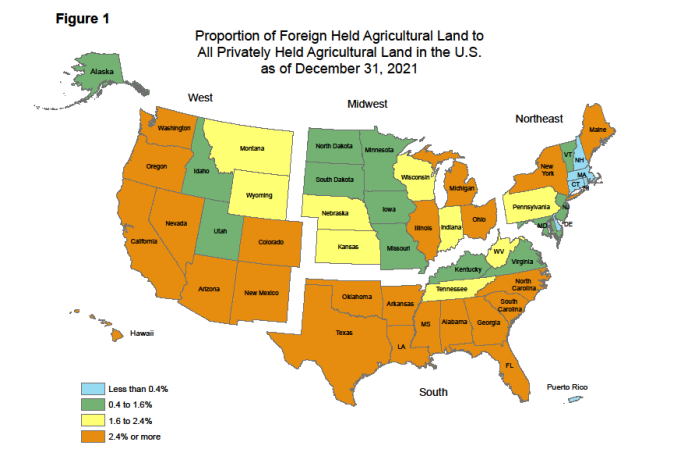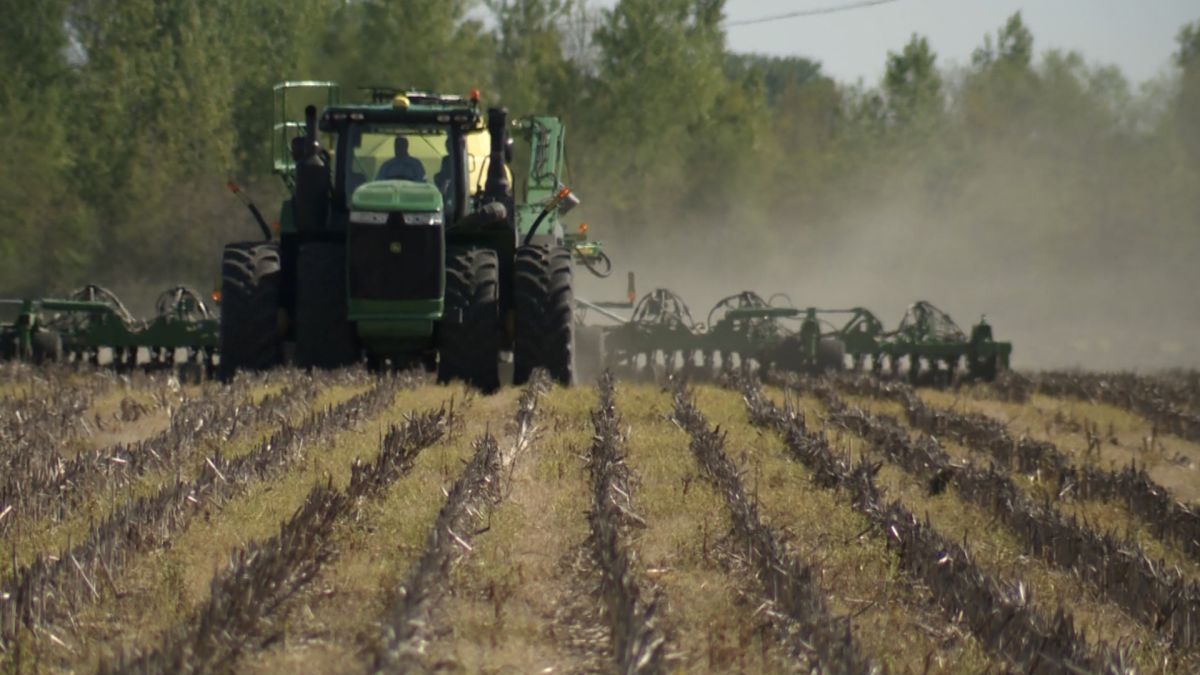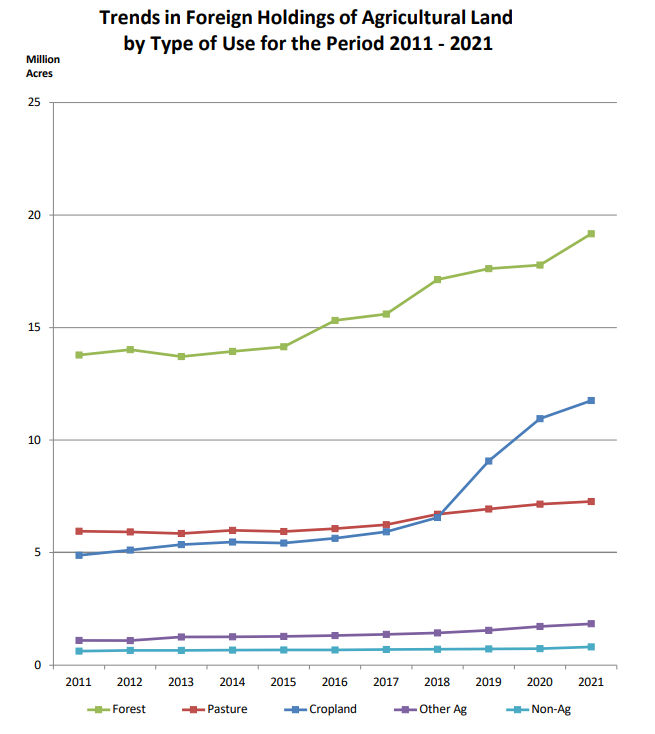The history and effectiveness of foreign land ownership laws in Indiana
The history and effectiveness of foreign land ownership laws in ... WFYI


Foreign Land Ownership in the US: A Report on State Laws and National Security
Earlier this year, Americans watched as a high-altitude balloon owned by China floated above the country from coast to coast.
When it was shot down off the coast of South Carolina, U.S. officials stated the balloon carried intelligence gathering equipment.
The Incident and Its Implications
And despite President Biden’s statements that the incident was unintentional and “embarrassing for Chinese authorities,” having what many view as an adversary in domestic airspace riled state legislatures.

[embedded content]
Laws Limiting Foreign Land Ownership
In response, a rash of new laws aimed at limiting foreign land ownership from countries such as China popped up across the nation.
- According to the latest report from the Agriculture Foreign Investment Disclosure Act, 2.2 percent of Indiana land is held by foreign entities. That’s about 434,000 acres of land. Nationally, 3.1 percent of all agricultural land is held by foreign entities, with China making up 1 percent of that figure.
See the full report here.

Micah Brown, a staff attorney at the National Agricultural Law Center, said that this isn’t the first time we’ve seen such laws aimed at stemming foreign land ownership.
“This issue has popped up at different times in our nation’s history, through different political flashpoints that were going on in the nation at that time,” he said. “This is just the most recent political flashpoint.”
In 2021, a U.S. subsidiary of the Chinese Guanghui Energy Company began the process of purchasing 140,000 acres of land in Texas 70 miles from Laughlin Air Force Base. The fact that Guanghui’s owner reportedly has ties to the Chinese Communist Party alarmed officials. In North Dakota, lawmakers started proposing legislation in that 2021 period,” he said. “And from 2021 to 2022, we had 12 states propose some kind of measure.”
Indiana was the first state to enact a new law during that period. Now, 35 states have proposed their own legislation to limit foreign land ownership.
Legislators have a popular phrase as to why these laws are so important.
“Food security is national security,” Brown said. “A lot of these proponents of the measures are saying ‘this is a national security measure.’ And that’s kind of the underlying reason for proposing these measures.”
Indiana’s Law: Senate Bill 388
But what do these laws accomplish? Indiana Senate Bill 388, titled ‘Foreign gifts and ownership of agricultural land,’ passed the Senate by a 49-1 vote and the House unanimously.

Senator Jean Leising, who authored the bill along with Senators Mark Messmer and James Tomes, said they passed the law to protect agricultural land from those who might not have U.S. interests in mind.
“Agriculture is a $35 billion industry in Indiana annually,” she said. “And we have to make sure that we don’t put that big industry in jeopardy. Plus, it’s our food supply as well.”
The law prohibits foreign entities from owning land in Indiana, with exceptions.
- The law does not apply to land used for research or experimental purposes.
- It also allows foreign entities to own up to 320 acres of land for crops or up to 10 acres for timber production.
- Land used for raising or producing eggs is also excluded.
Senate Bill 388 gave a one-year moratorium on Russian businesses and citizens buying land in the state. That moratorium expired at the end of June.
Leising said she is satisfied with how the law currently stands.
“Since this was signed in ‘22, and there was no debate on this issue in 2023, I’m not actually looking for any additional legislation right now,” she said.
Potential Federal Legislation
There’s a chance that some form of these state laws will become federal law. In the current session of Congress, the Senate approved an amendment to the National Defense Appropriations Act to restrict certain investments from China, Iran, North Korea, and Russia.
Brown believes that even if the amendment becomes federal law, other states will likely continue pushing their own legislation to add even more restrictions.
And how effective are these laws at protecting U.S. interests and citizens? Jeffrey Stake, a professor at IU’s Maurer School of Law, said it’s a mixed bag. On one hand, it lowers competition in the
The issues highlighted in the article are connected to SDG 2: Zero Hunger and SDG 15: Life on Land. The article discusses the concerns about foreign land ownership and its impact on food security and national security.
Based on the article’s content, the specific targets that can be identified are:
– Target 2.4: By 2030, ensure sustainable food production systems and implement resilient agricultural practices that increase productivity and production, that help maintain ecosystems, that strengthen capacity for adaptation to climate change, extreme weather, drought, flooding, and other disasters, and that progressively improve land and soil quality.
– Target 15.1: By 2020, ensure the conservation, restoration, and sustainable use of terrestrial and inland freshwater ecosystems and their services, in particular forests, wetlands, mountains, and drylands, in line with obligations under international agreements.
The article mentions the following indicators that can be used to measure progress towards the identified targets:
– Percentage of agricultural land held by foreign entities.
– Percentage of land owned by foreign entities.
These indicators reflect the extent of foreign land ownership and can help assess the impact on sustainable food production systems, ecosystem conservation, and land quality.
The article also includes visual representations of data showing the percentage of land owned by foreign entities over time, providing additional information for measuring progress.
Overall, these indicators provide insights into the extent of foreign land ownership and its implications for achieving the targets under SDG 2 and SDG 15.
Behold! This splendid article springs forth from the wellspring of knowledge, shaped by a wondrous proprietary AI technology that delved into a vast ocean of data, illuminating the path towards the Sustainable Development Goals. Remember that all rights are reserved by SDG Investors LLC, empowering us to champion progress together.
Source: wfyi.org
Join us, as fellow seekers of change, on a transformative journey at https://sdgtalks.ai/welcome, where you can become a member and actively contribute to shaping a brighter future.

SDGs, Targets, and Indicators
SDG 2: Zero Hunger
SDG 15: Life on Land
Table: SDGs, Targets, and Indicators
SDGs
Targets
Indicators
SDG 2: Zero Hunger
Target 2.4: By 2030, ensure sustainable food production systems and implement resilient agricultural practices that increase productivity and production, that help maintain ecosystems, that strengthen capacity for adaptation to climate change, extreme weather, drought, flooding, and other disasters, and that progressively improve land and soil quality.
Percentage of agricultural land held by foreign entities.
SDG 15: Life on Land
Target 15.1: By 2020, ensure the conservation, restoration, and sustainable use of terrestrial and inland freshwater ecosystems and their services, in particular forests, wetlands, mountains, and drylands, in line with obligations under international agreements.
Percentage of land owned by foreign entities.
Analysis
1. Which SDGs are addressed or connected to the issues highlighted in the article?
2. What specific targets under those SDGs can be identified based on the article’s content?
3. Are there any indicators mentioned or implied in the article that can be used to measure progress towards the identified targets?
4. Table: SDGs, Targets, and Indicators
SDGs
Targets
Indicators
SDG 2: Zero Hunger
Target 2.4: By 2030, ensure sustainable food production systems and implement resilient agricultural practices that increase productivity and production, that help maintain ecosystems, that strengthen capacity for adaptation to climate change, extreme weather, drought, flooding, and other disasters, and that progressively improve land and soil quality.
Percentage of agricultural land held by foreign entities.
SDG 15: Life on Land
Target 15.1: By 2020, ensure the conservation, restoration, and sustainable use of terrestrial and inland freshwater ecosystems and their services, in particular forests, wetlands, mountains, and drylands, in line with obligations under international agreements.
Percentage of land owned by foreign entities.








